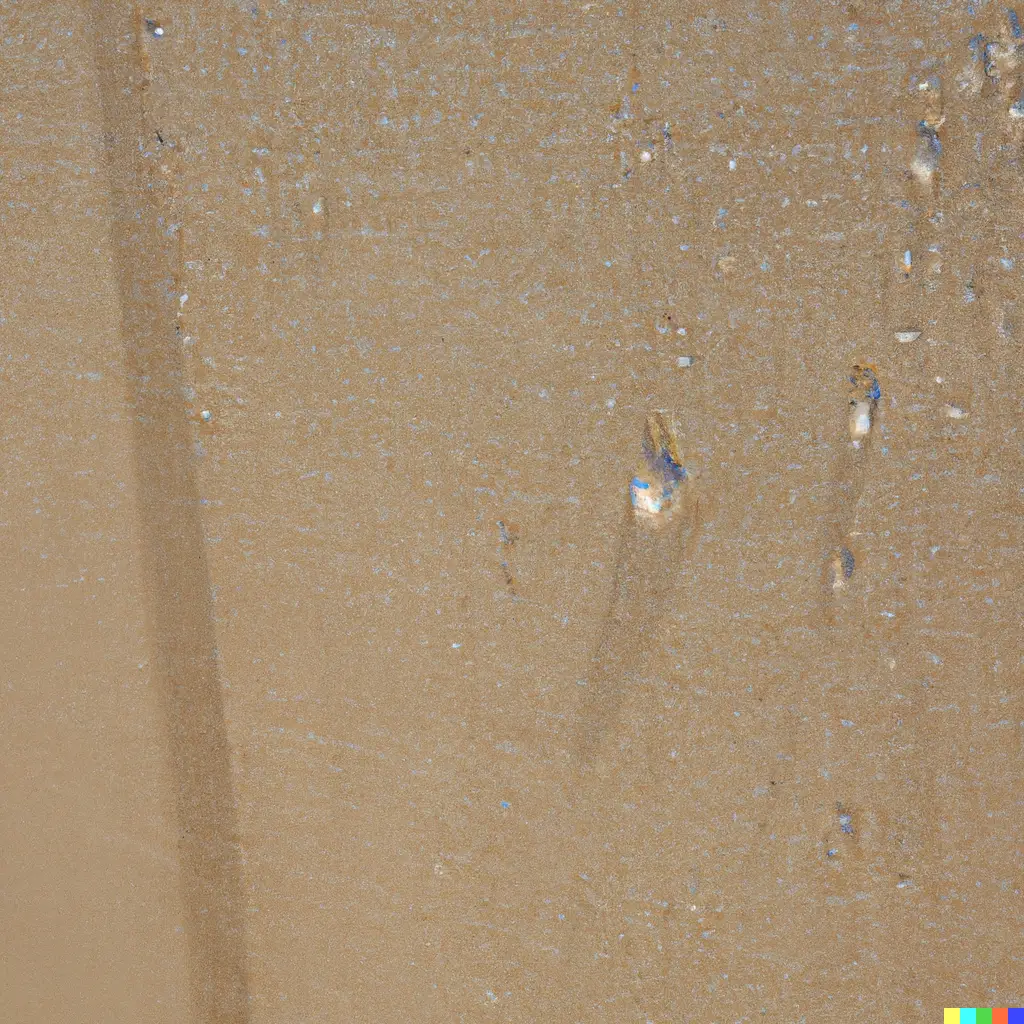I have heard some artists say that it is best to wet the canvas before painting, usually the back of the canvas. As I am more concerned about having the best possible surface to paint on, I thought about researching if it is better to mist the canvas with water before painting, especially with acrylic paint.
In general, wetting the back of the primed canvas is recommended because it wets the front of the canvas enough to keep acrylic paint wet and workable for longer. The canvas face is not dripping wet but just enough to make acrylic paint blending easier.
Apart from making blending easier, misting the canvas with water has other benefits like making the canvas surface taut. There is nothing better than a well taut, canvas that gives the sound of a drum when you tap on it. However, you need to learn to prepare a canvas correctly with or without water because a good painting surface is the basis of your beautiful creation.
Should you wet the canvas before acrylic painting?
Wetting the back of the gessoed canvas often has benefits such as allowing it to blend colors better and keeping acrylic paint wet for longer. Canvas fibers absorb the water and keep the canvas surface wet for longer.
However, spraying the front of the canvas can make the paint thinner and it can be undesirable for most artists. If you wet the front of the canvas it can be dripping wet and water will not be absorbed into the canvas because gesso prevents water absorption into the canvas fibers.
If you are concerned about having a smoother surface to paint on, you can gesso the store-bought canvas again and sand between the coats. Even if you are painting on your canvas that you stretched yourself, you will need to apply 2 to 3 coats of gesso for acrylic painting and at least 3 to 4 coats for oil painting. The more layers of gesso you apply the smoother the surface will be.
Apart from keeping the acrylic paint wet for longer, wetting the canvas also makes the canvas taut. This effect can be only for a short duration but it is useful when you are stretching your canvases. It is explained in detail in the below section of the article.
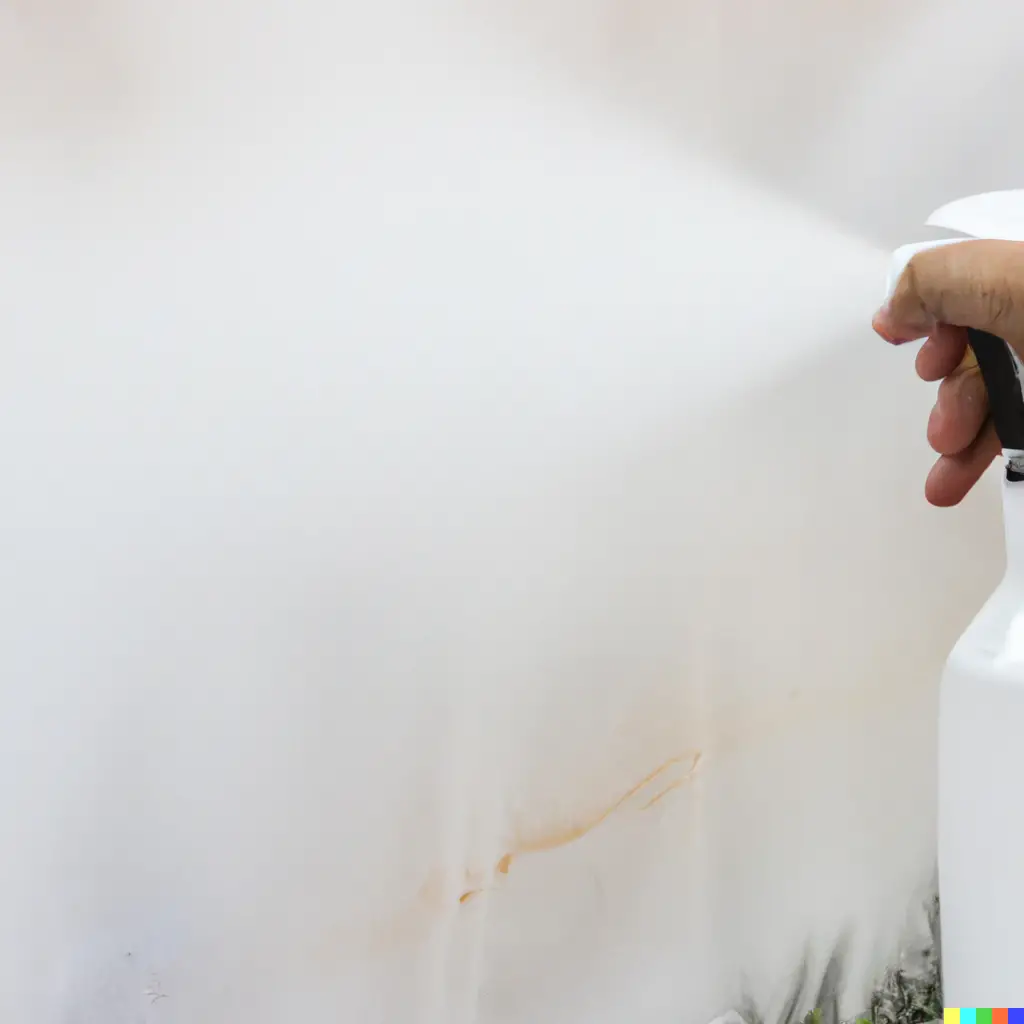
Choosing the right canvas for your needs
The word ‘canvas’ does not refer to any specific material in the field of textile fabrics. But it is applied to some closely woven materials of relatively coarse fabric such as linen. In the painting world, the term canvas generally implies a coated fabric that is ready for use.
You indeed need to be aware of how to start painting in acrylic, But it is more important to know what type of canvas you are going to paint on. Canvas is the best choice for painters all the time because of its versatility. But the most common reasons why canvas is so favored by painters are how nice it feels to paint on it and how long-lasting it is.
Traditional wood surfaces, which were previously frequently utilized by the old masters, are significantly heavier and more difficult to move than canvas. Acrylic paint is unique especially because they allow you to paint on several materials, including paper, canvas, wood, plastic, and more.
Cotton or linen fabric is typically used to make canvases. Cotton canvases are the most common canvases in the market because of their affordability. Otherwise, linen canvases are more expensive than cotton canvases and they are durable. Furthermore, cotton canvas has different kinds of textures based on the type of cotton fabric that is used. Linen canvases have smooth surfaces and are suitable for small details.
So, are you going to buy a canvas or make one yourself? As I think for a beginner artist it is good to buy a canvas from a store and test it for a while before stretching canvases yourself.
As you gain experience, you’ll understand what kind of canvas best suits your artistic sense. It is the right time to use a canvas that you made yourself. However, you can still use a good quality, ready-made canvas bought from a shop.
I hope that you have decided what type of canvas you are going to choose for acrylic painting and the importance of the painting surface. Now it is time to know the preparation of the canvas before acrylic painting.
Importance of priming a canvas
Many of the store-bought canvases are primed and prepared for painting. But do you know the importance of priming a canvas? If a canvas is not primed properly paint can lift or peel off the canvas. A proper priming technique helps to prevent absorption but holds the paint onto the fabric. Usually, layers of acrylic gesso, clear acrylic media, or traditional rabbit skin glue and oil primer are used for this purpose.
The primer helps your artwork appear at its best and last a lifetime in many ways, and it’s surprisingly simple to use. Gesso acts as a waterproof surface that facilitates even paint application on the canvas. Additionally, it prevents natural aging, preserving the vibrancy of your paint’s colors.
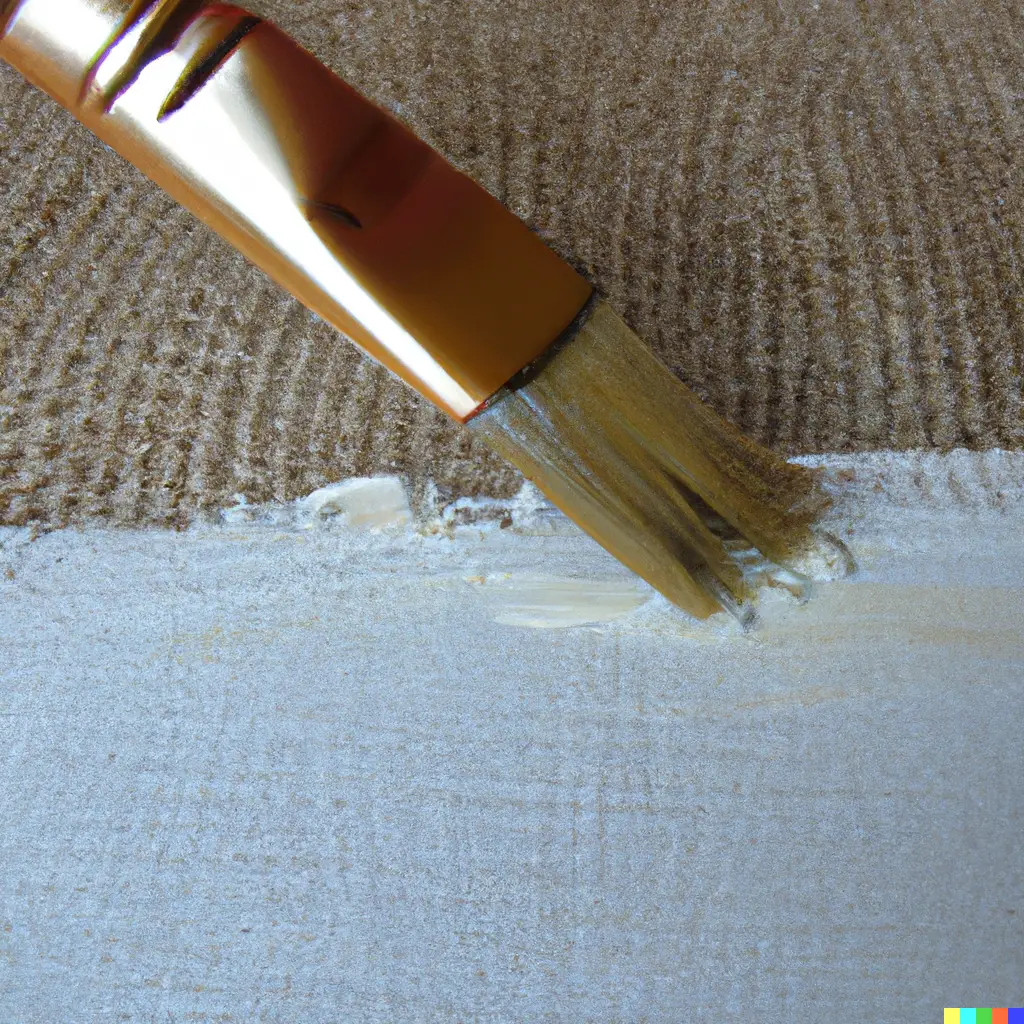
How do you prepare the canvas before acrylic painting?
As I have already mentioned you can use either a pre-primed canvas that is ready to paint or a canvas made by yourself. Now, let’s see how to prepare a pre-primed canvas. Yes, of course even though a canvas is pre-primed, still there are things we could do to paint on the surface nicely.
If you want to know more details on the proper way of preparing store-bought canvases you can read the article ‘Do you need to re-apply gesso on an already primed canvas?‘
5 Steps of preparing a pre-primed canvas
You can apply gesso on the already primed canvas. This will ensure better adherence of the paint on the canvas, provide a smoother surface to paint, and level the canvas without any lumps and bumps. You can use more than one coat of gesso and sand between the gesso coats.
I stretch my canvases now, but in the beginning, I also used pre-primed, store-bought canvases for convenience. Below I have included the steps I follow to prepare a pre-primed canvas to get to my desired surface.
Step 1: First, sand the pre-primed, store-bought canvas. You can use 200 to 400-grit sandpaper for this purpose.
Step 2: Apply a coat of gesso to the entire surface and let it dry for at least an hour.
Step 3: After drying the first coat of gesso for about an hour, apply gesso to the canvas again. If your canvas is still not smooth enough you can repeat the second and third steps. After the final coat of gesso is applied let the gesso dry overnight.
If you want to learn more about gesso drying times, and the application process for both acrylic and oil painting, you can read my article ‘How long does gesso take to dry? (With influencing factors)‘.
Step 4: After sanding the thoroughly dried canvas, if you are satisfied with the outcome you can mist water on the back of the canvas and let it dry. This will tighten the canvas a little. (this method will be useful if you do not receive canvas keys which are the little wooden keys that are attached to the canvas. But most of the time you will receive canvas keys with the canvas). Additionally, this method will slow the drying time of acrylic paint and make color blending easier.
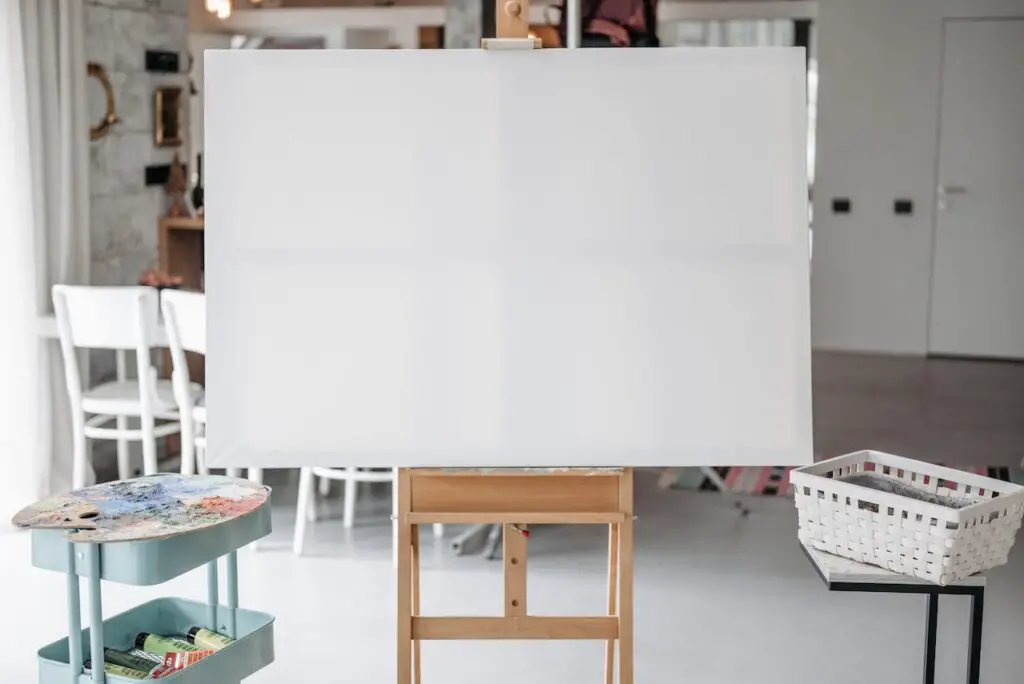
Step 5: Finally, you can paint on canvas. Starting from the background. I usually paint with acrylic paint after lightly misting the back of the canvas with water. It helps to thin the acrylic paint and to blend colors nicely.
If you don’t have gesso at hand you can make gesso using Elmer’s glue, chalk, and white acrylic paint. Instead of chalk, you can use marble dust as well. However, this process can become cumbersome. The initial cost will be higher but in the long run, it will be cheaper to make gesso.
Does water tighten the canvas?
Wetting a canvas usually causes it to shrink. As a result, if stretched while wet, it will relax when dry. This results in a slacked canvas rather than a taut one. In other words, the canvas needs to be stretched dry. After that, you can tighten it by wetting it with water or acrylic gesso.
However, after drying, it will still slacken a little. Also wetting the canvas before applying gesso is recommended by Ralph Mayer the author of “The Artist’s Handbook of Materials and Techniques”.
Some artists stretch the canvas two times: first, they stretch a raw, unprimed canvas onto a frame, only using push pins instead of staples or tacks. This is called the first stretch. Then they prime the raw canvas with gesso and let the gesso dry.
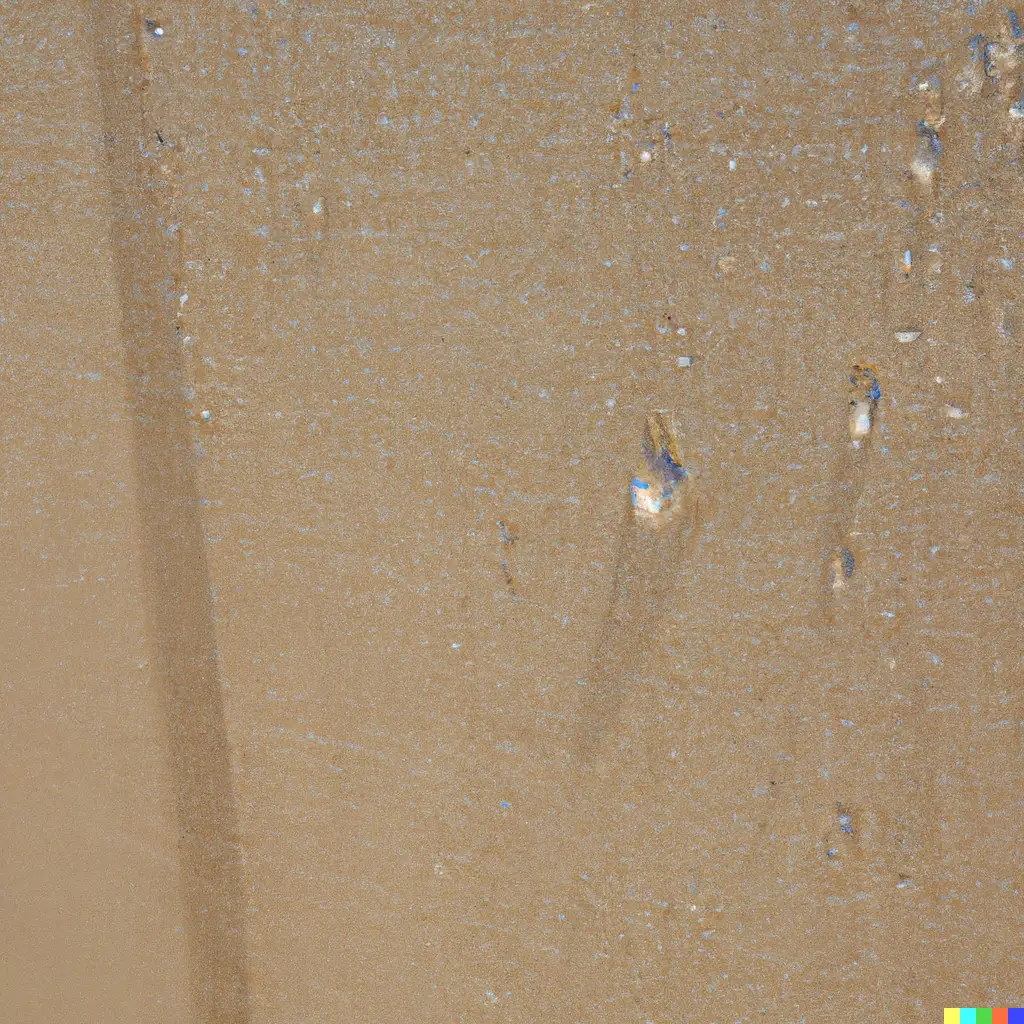
Now they do the second stretch using the staples or tacks. This would make it a permanent stretch. Simply leave the push pins in while doing the second stretching. Remove the push pins, only after the second stretching is done. Keep in mind not to overdo stretching as it puts the canvas under greater stress; as a result, for instance, if the relative humidity differs considerably, the entire structure will be under a significant deal of tension.
The final tautness of the stretched canvas depends on various factors, including the humidity and dryness of the environment. However, as the canvas has relatively short fibers and loses some of its elastic properties with age, I attempt to stretch my canvases as loosely as possible while keeping them tight enough to prevent slack. When the canvas is taught enough you can hear a drum sound when you tap on it.
The less stress there is on it, the better, in my opinion. If you are going to stretch your canvas, do not stretch it if it is wet. Because the canvas shrinks when wet and expands when it dries. The outcome is quite dramatic. Within minutes or even seconds of soaking a stretched canvas, it becomes a drum-tight canvas. Unfortunately, this effect is not long-lasting; after drying, the canvas relaxes once more.
Is it possible to prime a canvas with acrylic paint for oil painting?
I’ve noticed this question has been brought up many times on the internet. To understand this we must know the difference between acrylic paint and primer. Usually, canvas primer or gesso is made of pigment, chalk, and binder. And acrylic paint is made primarily from pigment, binder, and water. So, now you may have noticed that the primer has chalk in it which provide a tooth to the canvas for the paint to adhere.
Painting on a canvas with pigments bound by a drying oil media is known as oil painting. Linseed oil, walnut oil, poppy seed oil, and safflower oil are the most popular types of oil used in oil paints. Therefore the oil painting surface must have absorbency, porosity, roughness, or a combination of these features to a degree depending on the requirement of the work.
The question is, whether acrylic paint has all of these qualities to make the surface suitable for oil painting. Acrylic paint indeed has some binding properties that can be used for sizing canvas, but in my opinion, gesso is better than acrylic paint.
Even though it is not best to prime the canvas surface with acrylic paint, you can always paint on top of acrylic paint with oil paint. But never vice versa. Acrylic paint is flexible and it acts as a good ground for oil paint. But acrylic paint will not adhere well to oil paint. This means you cannot paint on oil paint with acrylics. it can even slow the drying process of oil paint. The painting can crack and deteriorate over time.
Conclusion
Priming the canvas is necessary even if you bought it from a store or made by yourself. A well-prepared surface can guarantee good results, live up to your expectations, and helps you focus more on creating. However, keep in mind there are no rules in art. Meaning you can either wet the canvas before painting or you can choose not to do so. Most artists wet the back of the canvas before painting to keep the paint wet for longer and to better blending of colors in acrylic painting. Some even do this as a way to taut the canvas surface even though the tightness is not permanent.

